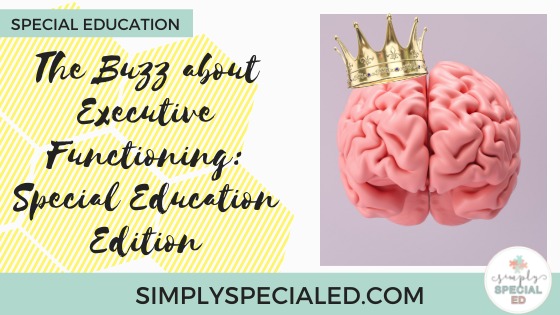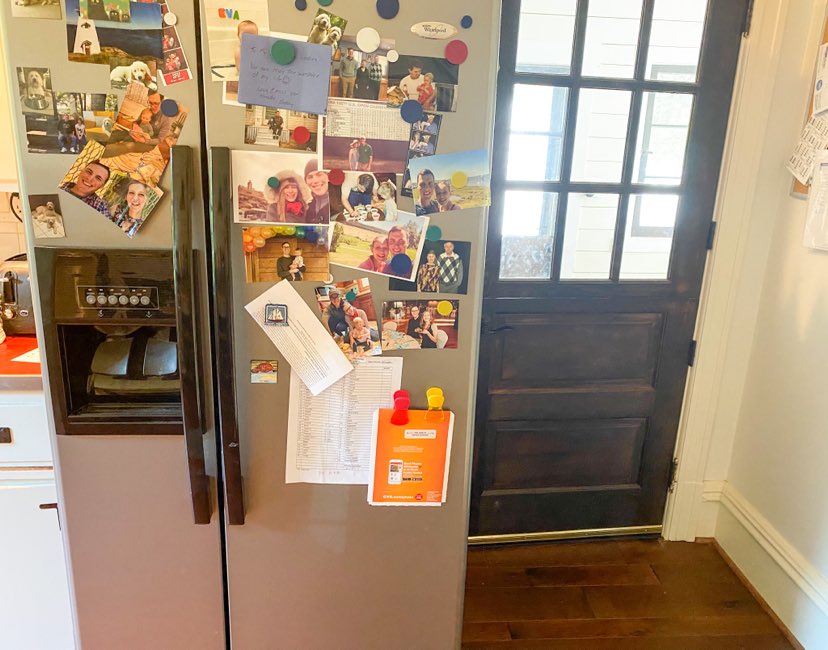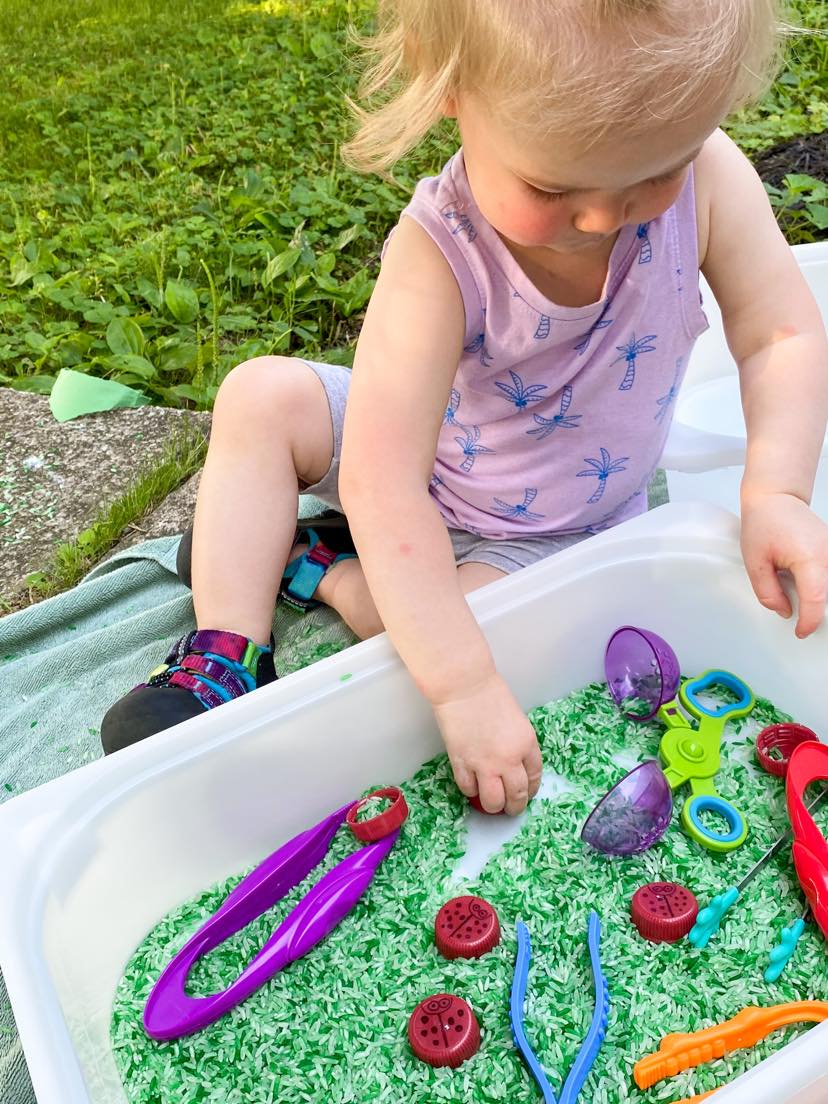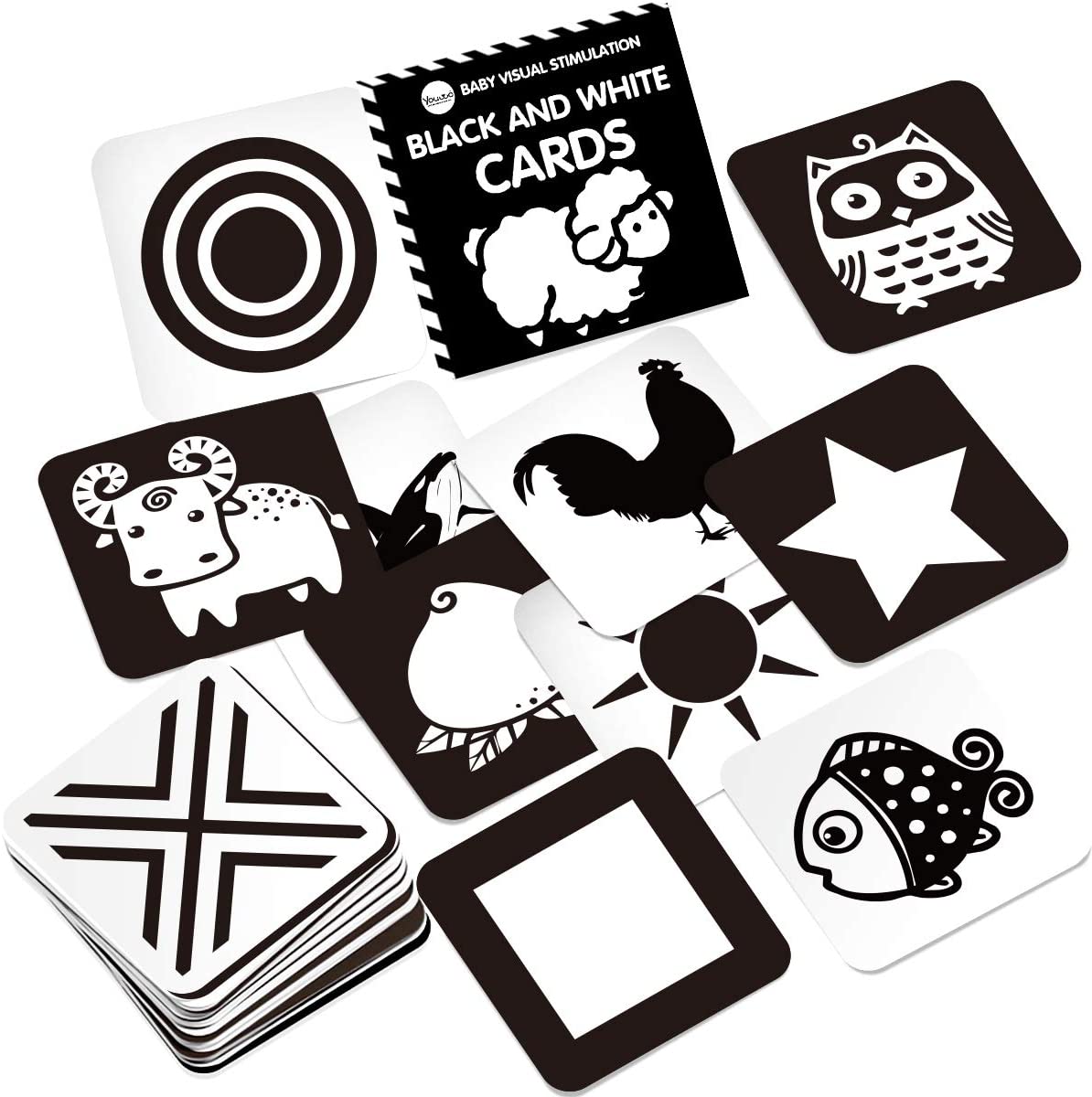The Buzz about Executive Functioning: Special Education Edition
Posted by admin on

Executive Function is a huge buzzword lately! I find it’s thrown around a lot in reports, IEPs, or in general terms like “he has difficulty with executive functioning”. However, it is never really defined into its components or specifically addressed.
What are Executive Functions

Executive Functions is an umbrella term. It is crucial to everyday success, participation, and safety. It also allows for effective adaptation and accommodation to changing environmental demands. They are a variety of skills that govern the bulk of cognitive processing. Executive functions include emotional, cognitive, and behavioral regulation.
In the educational setting, multiple professionals will essentially be targeting different components of executive functions. Executive functioning is an important aspect of a person’s ability to complete personal care, household chores, academic tasks, leisure activities, and social domains.
Components of executive functioning are critical life skills for our students of all ages, especially students in transition/vocational programs.
Ylvisaker and Szekeres broke down executive functioning into two systems/categories: A knowledge base and executive systems. (Jones, 2007, p.233).
Knowledge Base:
- An organized system of general information, learned skills or routines, rules, and procedures
- Without this knowledge base, new information is difficult to interpret, organize, and remember
Executive Systems:
- Deals with the mental functions related to forming, planning, and achieving goals
- Realistic goal setting, planning, self-directing and initiating, self inhibiting,
- Self-monitoring, self-evaluating, self-correcting, and flexible problem solving
Areas EF directly involves:
- Emotional control
- Flexibility
- Starting and completing tasks
- Working memory
- Planning and organization (materials, thoughts)
- Self-monitoring
- Paying attention
- Decision making
- Problem-solving
- Task switching
- Modifying behaviors
- Self-correction
- Sequencing
Development of Executive Functions

Executive functioning starts to develop very early in childhood and continues to develop into adulthood. I currently have a toddler and am 36 weeks pregnant and definitely working on monitoring and controlling my emotions. There are a lot of big feelings in my household currently.
It is important to remember that milestones typically happen in a sequential pattern but the timeline is different for all children! Here are some examples of what certain aspects of executive functioning look like in children through adults.

First Stages of Executive Functioning (typically seen in Infants):
- Focusing on objects → mobile or black/white picture cards
- Pointing/Grabbing toys or faces
- Trying to figure out how things ‘work’ → big interest in cause/effect toys
- Playing hide and seek and trying to imitate behaviors/actions (surprised face, clapping)
The Second Stage (Toddlers)

- Following simple step directions such as “put in”
- Cleaning up toys
- Completing simple puzzles
- Starting to label/understand emotions and behaviors → learning that hitting and biting are not okay
- Experiencing ‘big feelings’ → presented as tantrums, getting upset when there’s a change in routine, etc.
- Starting to understanding safety behaviors → understands the stove is hot, dangerous to go down the stairs, can’t run into the road (my daughter will do specific behaviors that she knows are not allowed when she is upset or wants extra attention)
- Playing for longer periods of time
The Third Stage of Executive Functioning (Elementary School)

- Able to follow directions/steps to complete a simple activity
- Able to process how long a task might take → for instance brushing teeth, a car ride to school
- Gathers materials for a routine task → adult assistance might still be needed
- Identifies/defines problems to many simple social and academic tasks → Kevin is sad because Creed pushed him, Angela is being mean because she wouldn’t let Phyllis help with the party
- Participating in organized social activities → for example clubs, sports, religious activities
- Learning how to control emotions better → such as decrease tantrums and the amount of adult intervention needed to calm down/solve problems

The Fourth Stage (Teen)
- Independently able to plan out steps to homework and projects to meet an end goal
- Following complex schedules → high school schedule, work schedule
- Independently identifying problems –> such as problems at home, work, school, with friends, etc.
- Able to manage unpredictable changes to schedules/routines
- A greater understanding of others emotions –> for instance the ability to console friends/family, understanding when someone is angry
- Greater risk-taking behaviors → for example pushing social norms and/or adult safety boundaries
- The ability to monitor performance and demonstrating the ability to make adjustments
Many children with a medical diagnosis of ADHD have difficulties with components of executive functioning
Children who are on IEPs with the eligibility of “ID” or “SLD’ might have increasing difficulties with executive functioning and have supports and modifications to support areas of need
What Executive Functioning Difficulties Look Like in a Classroom:

- Difficult time paying attention
- Starting a task and staying focused
- Might need multiple adult prompts and assistance
- Difficulty making friends and playing with other children
- Regulating emotions
- Might need increased help from an adult when upset and to calm down
- Upset when routines are changed
- ‘Fixation’ on things
- Need directions repeated frequently
- Sequencing tasks can be difficult → for instance remembering what step 2 looks like
- Managing time
- Forgetting where they placed things and/or having a difficult time keeping track of their belongings. For Example:
- Having difficult time managing materials for a craft
- Losing jacket on the playground
- Missing items from their pencil case frequently
Possible Accommodations & Modifications to Support Different Areas of Need in the Areas of Executive Functioning:

- Visual cues in conjunction with auditory directions
- List of steps with pictures depending on cognitive level/need
- Simplify instructions, describing only essential components
- Reduce the number of steps or simplify steps
- Have the student master step 1 before moving on to step 2
- Ask the child to go over the steps. Say “what’s next”
- Preferential seating- for example, allow the student to sit near the board or the teacher, away from doors/windows, flickering lights, and high traffic areas in the classroom.
- Provide a checklist or reminder sheet that describes (visually or in written form).
- Discuss with class/student ways/coping methods to decrease anxiety, stress, anger, and worry to help students be able to problem-solve.
- Reach out to your school psychologist or school counselor for more resources and strategies related to emotional regulation!
- Finding a planner, schedule, or checklist system, that is appropriate, to remember tasks
- Check out Stephanie’s blog on tactile schedules
- Daily schedules are written out and structure/routine are in place
- Many people/students with difficulties with EF demonstrating increased success and independence with a predictable schedule and routine
- Try a magnetic weekly schedule for older students or if that is too much to plan, try a plan dry erase board and write out each day!
- Breaking down components of a project
- For writing tasks, for older students, working on a quick outline to help formulate
- ideas
- Using a team approach to support the student!
- Check out my blog for tips on how to create successful relationships with your school team!
Zoltan, B. (2007). Vision, Perception, and Cognition: A Manual for the Evaluation and Treatment of the Adult with Acquired Brain Injury (4th ed.). Slack Incorporated.


The post The Buzz about Executive Functioning: Special Education Edition appeared first on Simply Special Ed.




